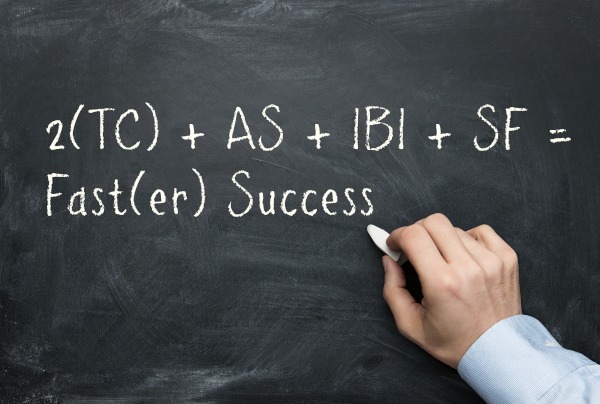Disrupting Acquisition Blog
The Formula for Fast(er) Success
While interviewing acquisition teams who’ve been successful at getting things done both fast and right, I spotted a trend. You might even call it the formula for fast success—or use it as a checklist for getting your own procurement off the ground.
2(TC) + AS + IBI + SF = Fast(er) Success
Five factors were present in every success story. Some had additional factors, but none of them had fewer than these five.
Direction with Top Cover (TC)
Direction might come in the guise of a letter from a general officer or it might be a requirements document blessed by a senior leader; however, for the greatest chance of success, it comes with top cover, to include the level of risk acceptable.
The top cover need not be a senior leader. Even a GS-14 Contracting Officer or a Program Manager with clout can provide top cover and acceptable risk level, though if they don’t get the support from above, they can do only so much.
Key to this factor is the acceptance of risk at the level of the person saying, “Go make this happen!” Those following that direction are going to be more risk averse if they know they’ll be crucified over the most minor of unforeseeable glitches, and they also know that any innovations that aren’t wildly successful may be career suicide. Senior leaders know this, too, but we hope they have denser backbones than leaders at the middle levels to back up middle and lower level innovators who take smart risks. If a General or SES isn’t willing to take risks, who in the trenches is as willing?
Team Culture (TC)
If you have the right people, you can do almost anything, miracles included. Success stories I’ve collected all had a forward-leaning team culture, and frequently the team—or at least key members—were hand-picked. You can have everything else you need to go fast and get equipment or services to the field in record time, but if your Contracting Officer thinks he can never have enough file documentation or your Program Manager can’t make a decision without the coordination of every member of a Program Office plus legal counsel, you’re not going anywhere fast.
Acquisition Strategy (AS)
If you want to go fast and have maximum flexibility over the life of the contract, you need to take time out up front to craft a strategy that will allow you to move fast and to be flexible later to add emerging solutions to related emerging problems.
You absolutely must think long-term when putting together this strategy, giving consideration to the next phase or more. This means that you can trim award lead time and future modification lead time by using oral proposals, award without discussion, abbreviated requirements, options, etc.
Don’t just look for milestones to cut from your schedule but look for different source selection strategies that will reduce your source selection by—not unheard of—six months to a year.
Industry Buy-In (IBI)
Don’t expect a fast track to success if you ignore Industry early in the process. Market research, early communications, and industry feedback all inform the acquisition strategy, the solicitation, and the long-term view. Buy-in from Industry isn’t necessarily something that results in a legal partnership, but eventually someone in Industry will partner to make the program a success, and that happens best when you are aware of the Industry perspective as early as possible.
Stable Funding (SF)
The last factor in the formula for faster success is to have stable funding. If not stable, then at least flexible funding. There are few things worse in trying to get on contract than when your funding gets cut so much that you can’t acquire a viable product or you’re sent the wrong color of money or expiring funds for a negotiation that can’t take place until after 30 September. If funding isn’t stable, both you and Industry could spend months churning on a repeatedly restructured buy.
If you’re hoping to go fast with your procurement, you’ll need all five of these factors. It’s possible to be successful without them, but chances are far less.
Use this formula as your checklist when you begin your acquisition strategy planning, and let me know in the comments below what other factors are must-haves for you.
Disclaimer: The opinions expressed here are those of the authors only and do not represent the positions of the MITRE Corporation or its sponsors.
Subscribe to Our Newsletter



0 Comments